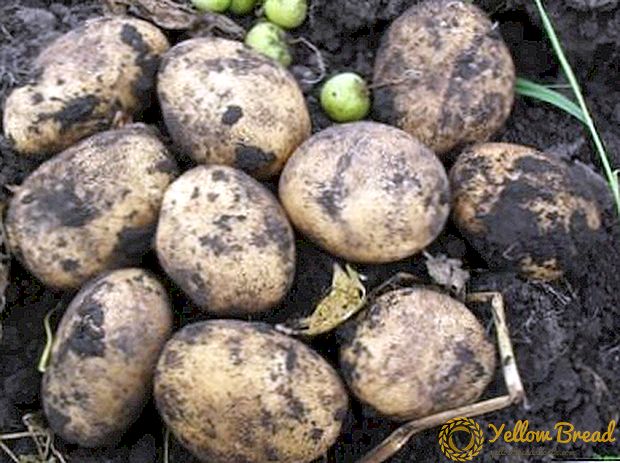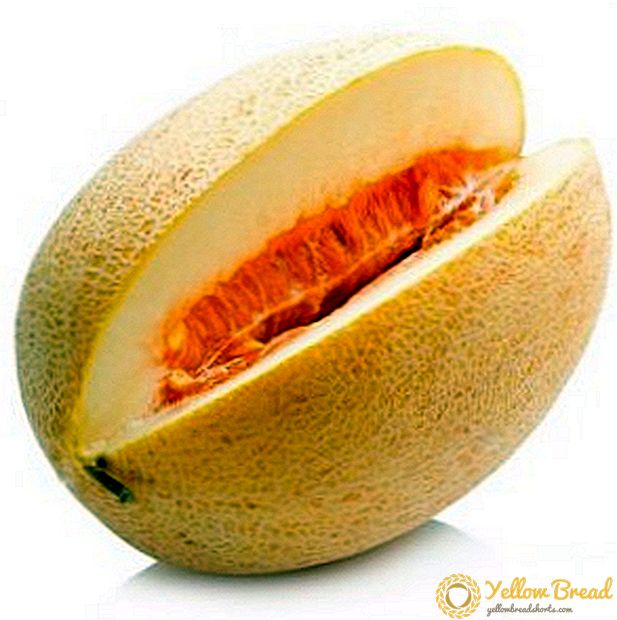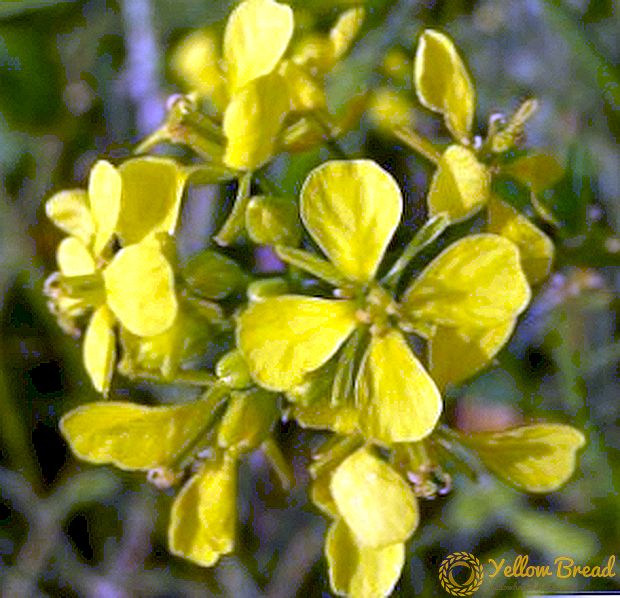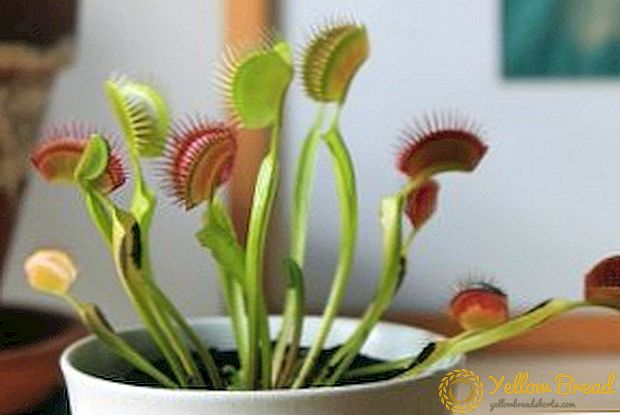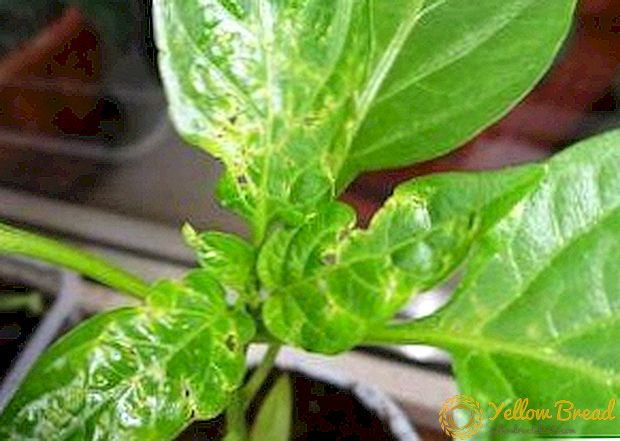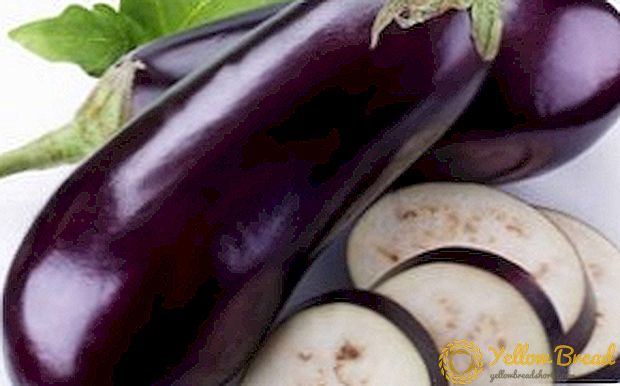
Divo eggplant vegetable, not very high-calorie, contains many useful substances and beneficial properties.
Earlier, when mentioning eggplant, most of them had associations with the south, the heat.
After all, everyone knows how thermophilic this fruit is.
But, already in the second half of the last century, gardeners from central Russia and even Siberia began to grow them.
The main thing is to choose the grade.
Since the growing season of these fruits can last from 120 to 180 days, and the summer is short, it is advisable to give preference to early or middle-early varieties.
This article lists all the most reliable, productive, tasty and hardy varieties of eggplant for growing in Siberia.
"Almaz" - an old high-yielding variety

This variety is practically classical, zoned very widely, including Siberia. The bush grows very compactly, which facilitates the care of it, the leaves have a green color.
The variety is medium ripening: from germination to ripening - 115 -150 days. The height of the shoots can reach 60 centimeters.
The yield of this variety with the right care can vary very high rates. From one bush can be collected yield 4-6 kg, and with good care - and more than 6 kg.
The fruit is characterized by a cylindrical shape. At the same time, the length of one fruit can reach 14 -18 cm. They have a dark purple color, shiny.
The mass figures are certainly not a record, but they are 100–200 g. The flesh is dense, greenish in color, without bitterness, pleasant, delicate in taste.
Fruits are characterized by compact, amicable ripening in the lower part of the plant. The height of the bush allows you to grow this variety in containers
Plant does not tolerate low temperatures, and especially sharp drops. Therefore, experienced gardeners are advised to plant this variety in greenhouse conditions.
It is advisable to sow the seeds in the first half of March. Seeds need to be embedded in the soil no deeper than 1.5 cm. While maintaining the temperature from +22 to + 28 degrees, germination occurs at 8-10 days. Seedlings should be planted only after a good warm ground. The most effective sowing scheme can be considered 70x40 cm.
It is recommended to grow this type of plant either in greenhouses or under a film cover. Do not forget about the moisture-loving nature of this plant.
With a lack of moisture, the death of the plant is inevitable. To increase the yield, you should use special dressings and additives.
Early hybrid form "Epic" - decoration of beds

Eggplant variety "Epic" is an early ripe hybrid. After transplantation into open ground, 65 -70 days pass before the fruit ripens.
The plant is very tall (95-100 cm), upright, powerful. The tobacco mosaic virus, quite common in this culture, is not familiar to Epicu. Distinguished by this variety of excellent ability to tie fruit.
Early ripening of the fruits of the "Epic" variety, resistance to diseases, promise that even 1m2 of your plot can make you happy with a crop of up to 8 kilograms.
A compact plant at the time of ripening becomes just hung with large (10x22 cm) dark purple fruits, drop-shaped. Pulp is dense, homogeneous, without bitterness, with harmonious taste technological qualities. Average fruit weight 300-400 g
Eggplant variety "Epic" can be considered in the medium of vegetables "commercial leader." And all thanks to the early maturation, high yields, excellent fruit quality, and disease resistance.
Vegetable growers recommend this variety for cultivation not only in greenhouses, but also in open ground, and the variety is zoned almost everywhere.
The disadvantages of this variety eggplant is clearly difficult to separate. The main thing is to regularly monitor the irrigation system. Do not overfill, so that root rot does not occur, however, the soil can not be overdried in any case.
This variety of eggplant fruits well on fertilized, light soils. It is desirable to place after onions, cucumbers, early grains. Legumes.
It is necessary to grow seedlings in the way. Planting of seedlings is possible after warming the soil to a depth of 10 - 12 cm to +15 ° C. The density of planting seedlings of eggplant When planting in the ground on 1 ha - 16000 - 20000 plants. Landing scheme: 80 - 100x45 - 60.
It is advisable to grow seedlings without picking, as this can significantly delay the maturity of the fruit (after all, when picking, the plants also tolerate adaptation). And also, after planting seedlings in open ground, or under a temporary shelter, it must be regularly tied to a vertical support.
"Dwarf early 921" - all about the variety and its benefits

This variety belongs to the early ripening, multi-fruited. The duration of the period from germination to maturity is 90 - 110 days.
Low bush - 30-45 centimeters, produces from three to five branches.Stems purple, leaves are dark green, often have purple veins. Low attachment of fruit on the stems.
This variety is popular in Siberia for its multiplicity. The yield for film greenhouses is from 3.6 to 5.7 kg per square meter, for open ground it is from 14 to 22 tons per gram.
Fruits are characterized by a round or round-pear shape. In the period of technical ripeness they acquire a dark purple color; by the period of biological ripeness, the fruits become brownish-brown.
Fruit weight can reach 200 - 300 grams.
Good taste is one, but a very valuable argument for buying this variety of eggplant.
The cons of growing this early eggplant variety have not been established.
Planting this variety eggplant is entirely and completely dependent on the time of planting eggplant seedlings in the ground. Under greenhouse growing conditions (if possible, even heated), seedlings can be planted starting from the end of April. But, it makes no sense to plant seedlings earlier than the end of May, unless you plan to grow eggplants in greenhouses or under cover.
The plant does not need special care. Should only regularly loosen the ground, mulch as well as remove weeds. It is advisable to remove the yellowing lower leaves and side empty shoots of the stepsons, thus the plant will be more open towards the sun.
Leaves should be inspected periodically for spider mites. If these parasites are found, fitoderm can be used to fight. The collection of fruits should be carried out before the beginning of the skin, it should not be hardened.
Eggplant, which will first appear on your table - "Early 148"

Old widely known variety. This early maturing variety can be used for both open and closed ground.
The bush belongs to the category of stunted (20-55 cm), standard, compact. Technical ripeness is observed after 110 days, biological - 148 days.
This variety is not distinguished by arrogant multiplicity, but at the same time gives a good result: For film greenhouses - 2.5-5.0 kg / m2, for open ground - 12.0-18.0 t / ha.
Hanging fruits, weighing up to 100-200 grams. They are characterized by a pear-shaped or shortened pear-shaped form, and the length of one fruit can vary from 5 to 8 cm, with a diameter of 5-6 cm.
By the period of technical ripeness, fruits get a dark purple color, and in the period of biological - yellow-brown. The fruits of the "ripening" eggplant have dense flesh, without bitterness, light green color.
Simplicity This variety guarantees harvest in less warm conditions of Siberia. It is often recommended for canning and culinary processing. Fruits eggplant early to frost.
Cons of growing this variety eggplant has not been established
Sowing seeds for growing seedlings is recommended in late February, early March. The furrow depth should not exceed 1.5 cm.
Seeds will begin to germinate for 8-10 days, provided that the optimum temperature is maintained + 22-26 degrees. The pick should preferably be replaced by transshipment whenever possible, and this procedure should be carried out with the appearance of the second true leaf.
Greenhouses can be planted after 60-70 days, but planting in open ground can only be done after the frost threat has completely passed, that is, in the second half of June.Planting density should be moderate, from about 12,000 to 18,000 plants per hectare.
The entire care of the plant is to maintain a stable temperature, regular watering, feeding, loosening. To accelerate the process of germination, recovery of the plant, as well as to increase fruit stitchiness, using special growth stimulants.
About a month after flowering, the fruits ripen and are ready to be harvested. Cut them from the stems must be either shears or a knife to avoid injury to the plant.
Eggplant "Black Handsome" - for what you love him exactly?

The variety is mid-season, fast-growing. From shoots to technical ripeness passes from 110 to 145 days. Suitable for growing in greenhouses, and in open ground, and under the film shelters.
The plant is characterized by short interlozii. The height can reach 50-70 cm.
This variety with good care is characterized by high yield. From an area of 1 m2, it is usually possible to collect about 5 kilograms of eggplant (under growing conditions in film greenhouses), and up to 20 tons per hectare, when grown in open ground.
The fruits have a dark purple or dark crimson color, and the skin has a beautiful glossy sheen. The form of them is characteristic pear-shaped. Can reach in weight 200 g.The flesh has no bitterness, dense.
Popularity among gardeners to this grade is provided with stable and friendly fruit bearing. Fruits tolerate transportation and long-term storage.
This variety can be safely recommended for all types of culinary processing.
Grade eggplant Black handsome in the northern and more central regions of Russia, it is desirable to grow in greenhouses - under temporary film shelters, in hotbeds, greenhouses.
Sowing seeds for seedlings should not be earlier than the first half of February. With the method of transshipment (as far as possible, not by picking), transplant into a vessel of large forms, at the stage of growth of two true leaves.
It is recommended to land in the ground only after the frosts stop in May - June. The landing pattern may look something like this: 40 * 60cm.
The landing site should be as sunny as possible, the ground is saturated with organic matter. Landing after the nightshade is not recommended. The best predecessors can be considered: beans, carrots, onions.
The basic basics of care for this variety of eggplant can be minimized: regular weeding, feeding, loosening. Shaping the bush is important to increase yields.: before the first fork, remove leaves and side shoots.
At about the end of July, leave only 5-6 of the largest ovaries on the plant, remove other ovaries and flowers.
"The Nutcracker" - the best eggplant with a fabulous name

The Nutcracker - Medium Early high-yielding hybrid. From the moment of transplanting to full maturity 45 days is enough. Sprawling bushes, reach a height of 80 centimeters. The leaves have a dark green color. The variety is considered unpretentious.
The average yield per bush is 3–5 kg, but if the care is arrogantly good, then more than 6 kg can be collected.
The fruits of this variety eggplant have a dark purple color, with a glossy peel, oval. The length of the fruit is 12-14 cm. The weight of the fruit is on average from 250 to 600 g. The flesh does not have bitterness, it is white.
The main advantage of this variety is considered to be regular, even in the upper part of the plant, protoobrazovanie. Due to this, the harvest is collected in several stages. Fruits tolerate transportation, do not become loose. Subject to long-term preservation.
The main disadvantage of this variety is the recommendation of growing under film shelters, or in greenhouse conditions.
The cultivation process of the Nutcracker variety is sprouts.In early March, you can carry out the sowing of seeds. The optimum temperature for germinating seeds, and later growing seedlings can be considered 25 degrees.
The soil for seedlings should be loose and light, should retain moisture well. Starting from mid-June, seedlings can be planted in greenhouse conditions, or in the ground. Landing scheme - 40 to 30 cm.
Stimulate more intensive growth can be hilling. And also preferably periodically plant feed with various mineral fertilizers. The first time - you can feed a week after the planting of seedlings, and the second - in a month.

